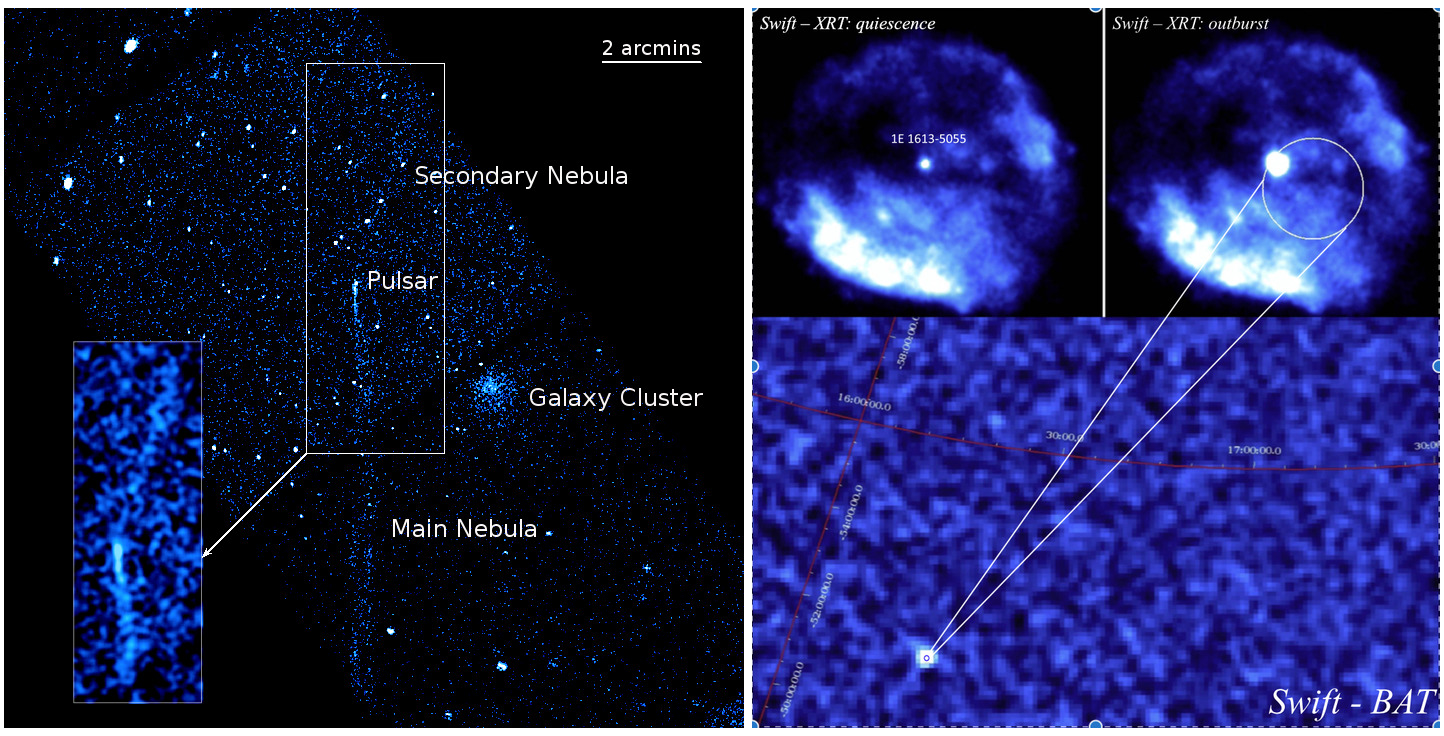Neutron stars (NSs) are ideal cosmic laboratories for testing extreme physical conditions. With a mass comparable to that of the Sun compressed inside a radius of ~10 km, their central density is higher than nuclear saturation density and surface gravity is 100 billions times the Earth’s. NS interiors are one of the few places in the present Universe where all fundamental forces are equally important at the same time, so our understanding of these extreme objects requires physics that cannot be tested in terrestrial laboratories.
Our vision of isolated NSs dramatically changed in the last 20 yr. Multiwavelength observations unveiled a wide variety in the birth properties of NSs and in their evolution as a function of the time, as testified by the presence of different classes of objects: rotation-powered pulsars, magnetars, central compact objects in supernova remnants, dim X-ray emitting neutron stars.
The understanding of the various classes, and the building up of a consistent evolutionary scenario are the long term goals of our research group, which has been involved since more than thirty years in the identification and study of isolated NSs exploiting all the main satellites for X-ray and gamma-ray astronomy (XMM-Newton, Chandra, Swift, NuSTAR, NICER, AGILE, Fermi), complemented by optical observations with the Hubble Space Telescope and ground telescopes at ESO.

We are working on different lines:
Physics of Magnetars, neutrons stars powered by their own magnetic energy that host the strongest magnetic fields in the present Universe. Starting from the discovery of Anomalous X-ray Pulsars, one of the two known phenomenological classes of magnetars, our group has been very active in characterizing the properties of these NSs. Using multiwavelength observations to constrain spectral and temporal phenomenology as a function of the time, we investigate the topology and strength of the magnetic field; the surface and magnetospheric emission physics; the mechanisms triggering magnetar outbursts and driving their long-term temporal evolution; the presence of magnetars in supposedly different isolated NSs, with a particular focus on the class of central compact objects in supernova remnants.
Physics of rotation-powered pulsars (RPPSRs), neutron stars powered by their own fast rotation. More than 50 yr ago, detection of RPPSRs was the first evidence ever for the existence of NSs; however, the mechanism powering their emission is still not understood. Our group is focusing on:
a) X-ray emission geometry of RPPSRs. Constraining the emitting region and radiation pattern in the soft X-ray range is a crucial step for a physical understanding of the radiation mechanism. Coupled with the radio and gamma emission patterns, this will allow to disentangle physics from geometry and to understand how multiwavelength emission depends on NS parameters such as age, spin-down luminosity, magnetic field intensity and inclination.
b) X-ray emission properties of old RPPSRs. X-ray emission evolves as a function of pulsar age; for caracteristic ages ~1 Myr (old RPPSRs), detection of thermal radiation from small hot spots constrains particle acceleration in the magnetosphere in a regime close to the “death line”, a poorly understood limit in the Period/Magnetic field parameter space beyond which RPPSRs are not any more able to produce particle pairs in the magnetosphere and cease to radiate.
c) X-ray emission properties of mode-switching RPPSRs. Mode-switching pulsars alternate between two (or more) modes characterized by different properties in the radio band. Surprisingly, it was recently discovered that the X-ray properties of such RPPSRs also change when they switch between different radio modes. A physically realistic description of the changing X-ray emission is crucial to understand the still unknown reasons for the mode-switching behavior.
d) Physics of Pulsar Wind Nebulae (PWNe), extended structures powered by the interaction of the RPPSR particle wind with the interstellar medium. Their study probes emission geometry and composition of the pulsar outflows, the injection history from the pulsar, the density and composition of the surrounding ejecta. We are focusing on peculiar cases with an elongated morphology, which challenge standard models postulating particle acceleration at the pulsar wind termination shock.
e) UVOIR properties of RPPSRs. Our group is very active in observations of RPPSRs in the near Ultraviolet (UV), Optical (O) and near Infrared (IR), starting from the early 1990s, where we pioneered the field of neutron star optical astronomy. Our investigations range from the search for new pulsar counterparts, to the study of UVOIR spectral, temporal and polarimetric properties (constraining physical conditions both on the NS surface and in the magnetosphere), to the search for new, peculiar systems hosting millisecond RPPSRs among unidentified gamma-ray sources.
